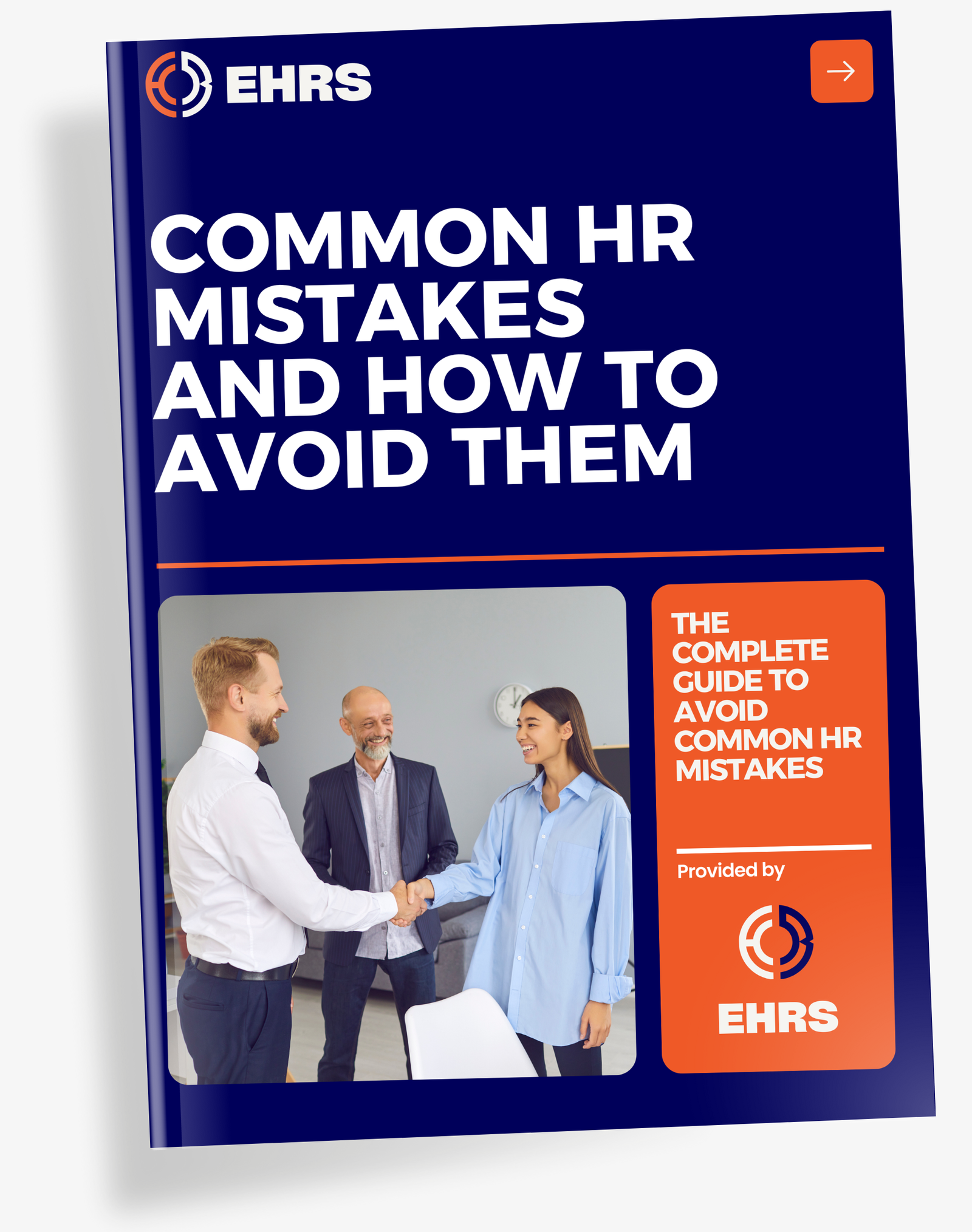Human resources compliance is a term that receives quite a bad reputation since people believe it is just boring paperwork or some tedious administrative task.
However, in real life, non-compliance is not just a technical issue, it can trigger a lot of legal battles, heavy fines, or workplace issues like harassment, discrimination, and retaliation.
We firmly believe that employers need to be aware of this and learn how to protect their businesses, become fully compliant with all HR regulations and guidelines, and create a fair and safe working environment.
With that in mind, here’s all what need to know to become and stay compliant in 2025.
What is Compliance in Human Resources?
HR compliance is the process of having policies, procedures, and legal requirements in place that would ensure a workplace operates ethically and legally. It means aligning labor laws to prevent discrimination and create a fair working environment, all the while protecting the company from lawsuits, hefty fines, or reputational risks.
What Is HR Compliance in the European Context?
HR compliance in Europe refers to adhering to a complex set of EU-level directives, national labor laws, and sectoral or collective agreements that govern employment relationships. This includes:
- Ensuring lawful contracts and fair working conditions
- Complying with working time directives and minimum wage laws
- Managing employment benefits, taxes, and social security contributions
- Adhering to GDPR and other employee data protection rules
- Following country-specific rules on dismissal, leave, and employee representation
Unlike the US, where compliance is fragmented across federal, state, and local jurisdictions, EU countries are bound by both national law and overarching EU directives, creating an additional layer of complexity for cross-border employers.
Types of Compliance in Human Resources Management
HR compliance falls into several categories, but it essentially operates on two levels.
First we have the policy and procedure establishment that have to align with the latest employment laws and regulations. And second, we have the active enforcement of these policies that would ensure the company and its employees become and stay compliant within the laws.
Here’s a breakdown of the types of compliance and their responsibilities:
1. Statutory Compliance
This covers the mandatory employment laws imposed by each EU member state, such as:
- Legal working hours (e.g. Working Time Directive: max 48 hours/week)
- National minimum wage (varies by country, updated annually)
- Parental leave and sick leave rights
- Anti-discrimination laws (race, gender, age, religion, disability)
Employers must ensure contracts, working conditions, and payroll reflect these statutory standards.
2. Regulatory Compliance
Regulatory compliance involves aligning with sector-specific regulations, EU labor directives, and European Court of Justice interpretations. Examples include:
- Posting of Workers Directive
- Whistleblower Protection Directive
- Health and Safety directives
- Equal Pay for Equal Work
These are enforced at national level by labor inspectorates, data protection authorities, or health and safety agencies.
3. Contractual Compliance
Contractual compliance guarantees that companies would honor legally bound agreements made to their vendors, employees, or partnered organizations. Companies have to make sure they are respecting employment contracts, collective labor agreements (CLAs), and vendor or service-level agreements
Breaking away from these terms and conditions would lead to legal disputes, heavy fines, and financial penalties.
4. Collective Labour Law Compliance
In much of Europe (e.g. France, Germany, Netherlands, Nordics), collective agreements play a central role in HR compliance. These can govern:
- Working hours
- Wage scales
- Notice periods
- Holiday entitlement
Employers must be aware of sector-specific CLAs — especially when entering new countries or industries.
Human Resources Compliance Issues
Every company, regardless if it is a small, medium, or large-sized business, has to adhere to labor laws and regulations. Failing to do so would expose the company to various fines, legal issues, and reputational damage.
Here are a few examples of very common compliance challenges that many businesses may or already encounter:
Wage & Hour Violations
In the United States, for example, there is a patchwork of local, state, and federal laws that govern employee rights regarding working hours and wages. Within these regulations, there are outlines for everything, from daily work limits, to weekend pay and overtime.
In Europe, many countries have national labor inspectorates that audit employers on overtime, night work, and pay gaps. For example, in France, failing to record working time properly is a legal offence.
Non-Compliance with GDPR
Employee data handling is heavily regulated under GDPR. Mishandling data (e.g. storing resumes without consent or failing to anonymize payroll data) can trigger six-figure fines.
Wrong Employee Classification
Misclassifying independent contractors (e.g., in Germany or Spain) can lead to retroactive tax payments, benefits liability, and insurance backcharges.
Workplace Safety Breaches
Employers must implement health and safety protocols in line with EU H&S directives. Non-compliance can lead to suspension of activities, fines, or criminal charges in extreme cases.
Non-Adherence to Local Leave Rules
Failing to grant mandatory parental, sick, or annual leave (especially in countries like Sweden or Italy) violates both national and EU laws and invites litigation or government sanctions.ch company risks penalties, in addition to reputational damages among applicants who value transparency in pay.
How to Ensure Human Resources Legal Compliance
There are two key strategies to ensure complete compliance: knowing how to conduct a compliance audit and following the best practices regarding HR compliance.
Let’s dive into the details of both:
a) How to Conduct an HR Compliance Audit
HR compliance audit is a structured review to ensure your company’s HR practices perfectly align with all legal standards. This helps to identify potential risks, improve HR operations, and timely address compliance gaps.
To do this, here’s a step-by-step mini-guide on conducting an HR audit:
1. Determine the Scope
The first thing you need to do is identify which areas you’d want to review, like wage and hourly laws, workplace safety, benefits, employee classification, or equal employment practices. Some areas may require more attention than others, so it will depend mostly on your company’s industry, size, and feedback from employees.
2. Identify Compliance Obligations
Depending on if you are a small business or a startup the situation might be different.
Next, you need to understand the national labor laws, EU directives, and, where applicable, sectoral or collective agreements that govern your company’s operations.
For example, if you operate a small business with 15 employees in Germany, you may still be required to comply with country-specific workplace safety laws under DGUV (German Social Accident Insurance), even if your business is considered low-risk. Similarly, in most EU countries, even small employers must comply with occupational health and safety regulations and maintain basic risk assessments, though reporting thresholds may vary by country and industry.
3. Evaluate HR Policies & Processes
It is imperative that you review your existing policies to make sure that they align with the latest human resources compliance requirements. This includes overtime rulings, leave/absence policies, workplace safety regulations, payroll processes, and pay transparency laws.
4. Document Compliance Issues
After the first three steps are completed, make sure to create a report that will outline any gaps in compliance or concerns that have popped up during the audit.
5. Develop an Action Plan
Create a detailed plan of action to close any compliance gaps that have appeared during the initial report. Make sure to sign responsibilities for each task, set specific deadlines, and determine if there is a need for additional training, new system, or policy updates.
6. Follow Up & Observe
After all changes are implemented, ensure regular observation practices to maintain HR compliance. You can schedule annual or bi-annual audits to see if there are any new issues and how quickly they are being addressed.
b) Human Resources Compliance Best Practices
Becoming a compliant workplace is not an easy task and it requires including laws and regulations into daily practices. By complying with the best practices available, you ensure your company creates a fair and transparent working environment, reducing legal risks in the process.
Focus on the following key strategies to ensure your company stays compliant:
- Create an HR Compliance Checklist
- Stay Updated on Legal Changes
- Set Up an HR Compliance Calendar
- Leverage HR Technology
- Apply Policies Consistently
- Make Compliance a Team Effort
- Provide Employee Compliance Training
- Train Managers on Compliance
Human Resources Compliance Checklist
HR compliance consists of a wide range of components, so creating a checklist can save valuable time and ensure you stay proactive and on top of all HR management aspects.
However, the items on a compliance checklist may vary depending on a company’s size, industry, and location, here are some basic categories for all types of businesses:
- Recruitment, Interviewing, Hiring
- Onboarding Procedures and Company Policies
- Employee Classification
- Diversity, Equity, Inclusion, and Belonging (DEIB)
- Safety and Workers’ Compensation
- Compensation and Benefits
- Termination and Separation
- Unions and Collective Bargaining Agreements
- Data Privacy and Information Security
HR Compliance Recap
Human resources compliance is more than just a mere boring administrative task. It takes a collective responsibility that involves employees, managers, leadership, and the HR department.
Companies can reduce the legal and financial risks when they introduce compliance into everyday practices, stay informed on latest legal changes, and create a culture of transparency.
When these priorities are properly addressed, the workplace becomes a great place to be in, ensuring no legal disputes, fines, or penalties.





